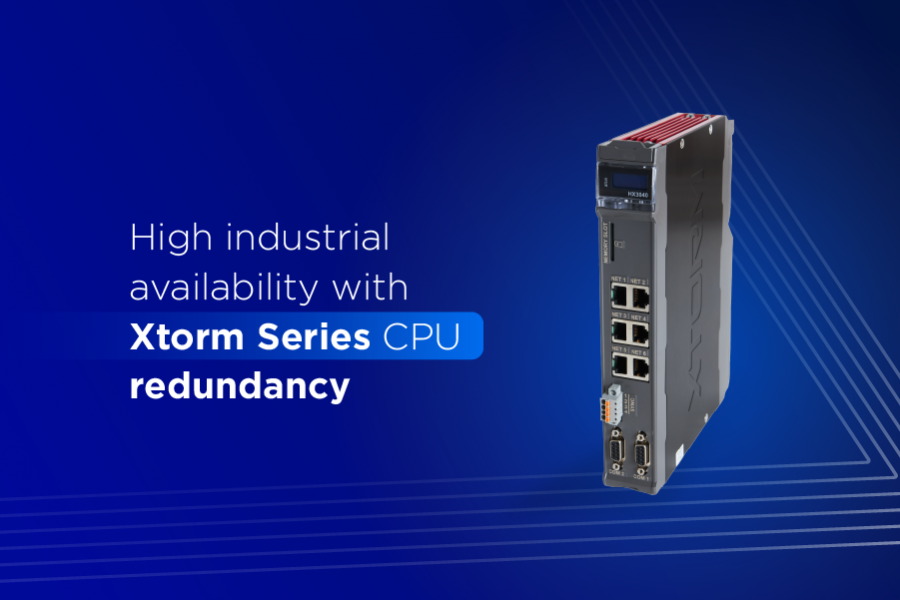
High industrial availability with Xtorm Series CPU redundancy
In industrial processes, control system reliability is a key factor in ensuring operational safety and efficiency. Critical applications that run 24/7 cannot afford unexpected interruptions. A single failure can disrupt an entire production line, lead to financial losses, and directly impact productivity and corporate reputation. To mitigate these risks, redundant architectures are widely adopted as a strategy to ensure continuous operation in case of failures.
Among the most advanced solutions for ensuring high availability, the Xtorm Series from Altus stands out. This Remote Terminal Unit (RTU) series was designed to offer ruggedness, flexibility, and redundancy at both hardware and software levels.
In this article, we take an in-depth look at how Xtorm’s CPU redundancy enhances safety and efficiency in critical industrial applications, protecting processes and ensuring operational stability for industries.
- Hardware failure.
- Power supply failure.
- Unexpected removal of the controller from the rack.
- Communication failure.
The redundancy status can be monitored directly in the programming software and on the CPU’s LCD display, enabling precise system management. The switchover between units can be activated by the following methods:
- Commands from the programming software or a SCADA system.
- User applications detecting failures, such as Ethernet communication anomalies.
- Diagnostic button on Xtorm series CPUs.
Autonomous functions and data synchronization
One of the key advantages of CPU redundancy in the Xtorm Series is its autonomous assignment of primary and standby roles. During initialization, the CPUs automatically determine which unit will be active and which will remain on standby, eliminating the need for manual configuration.Both units run the same program and share process data, with real-time synchronization of operands through dedicated channels. These channels ensure the consistency of the following information:
- Redundant variables.
- System diagnostics.
- Redundant user memory.
- Event queue.
- Project and command synchronization.
- Mechanical vibrations.
- Wide temperature variations.
- High levels of electromagnetic noise.
- Exposure to electrostatic discharges.
These features make the series particularly suited for power plants, powerhouse facilities, and installations near large electrical devices.
Advanced redundancy architecture
The Xtorm Series supports various redundancy configurations, ensuring high availability for critical industrial systems. Among the key supported architectures are:
- 1. CPU with Remote I/O and Loopback
Uses two HX8300 or HX8320 modules per rack. Ensures operation even in the event of cable or expansion module failures.Ideal for systems requiring continuous maintenance and extended availability.
- 2. CPU and power supply redundancy
Implements hot-standby redundancy, allowing automatic switchover in case of failure. Prevents interruptions in critical processes, ensuring higher productivity and efficiency. Enables module replacement without shutting down the system.
Enhanced connectivity with MasterTool 3.70
The evolution of the Xtorm Series was accompanied by significant improvements in the MasterTool configuration and monitoring software. With version 3.70, MasterTool began offering full support for Xtorm RTUs, ensuring a more integrated and efficient configuration experience. This update enabled:?
- Expanded compatibility – The Xtorm Series can now be configured within the same MasterTool environment used for the Nexto Series, unifying the management of different automation devices.?
- Support for PROFINET Controller – The HX3040 CPU now supports the PROFINET Controller protocol in non-redundant mode, expanding its integration capabilities with high-speed industrial networks.?
- Implementation of OPC UA Server – The HX3040 CPU now also includes support for OPC UA Server in non-redundant mode, enabling efficient and secure communication with SCADA systems.?
- Cybersecurity enhancements – The update introduced improved data and automation infrastructure protection, reinforcing resilience against threats and unauthorized access.?




